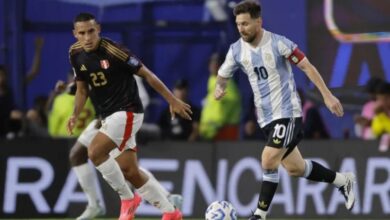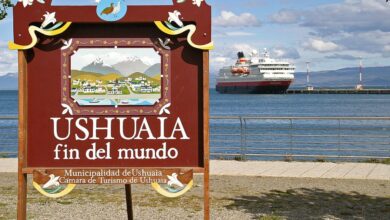Argentina Rekindles Eternal Rivalry After Unforgettable Superclásico Spectacle

A roaring crowd of more than 85,000, an audacious teenage hero, and a century-long rivalry built on triumph and heartbreak set the stage for this weekend’s River Plate–Boca Juniors showdown, reminding the world why Argentina’s Superclásico stands among football’s greatest spectacles.
A Weekend of Roaring Tension
This past Sunday, Argentines everywhere stopped in their tracks to watch River Plate and Boca Juniors renew a storied conflict older than many countries’ professional leagues. More than a mere match, the Superclásico remains an emotional cornerstone of Argentine culture. From busy Buenos Aires roads to distant Patagonia settlements, supporters displayed their team’s hues. Family devotion over many years provided the drive. This shared enthusiasm gives the Superclásico extra importance. While some sat tensely in front of flickering television screens, 85,000 supporters packed into River’s newly expanded Mas Monumental stadium, forging a deafening atmosphere no microphone could fully capture.
Before the opening whistle, a hush fell for a minute’s silence commemorating Pope Francis, who had passed away just the previous week. Then came the explosion of noise. A Superclásico match contains noticeable energy. Confetti swirls around, and people chant without stopping, and tension goes through each song. For a nation that loves soccer, the River-Boca contest is a highlight. This game contains pure adrenaline and action that stops the heart. The game addresses more than just league points. It is about local honor, memories from youth, and a long-standing rivalry that reflects class differences tied to each team’s past.
Players faced pressure to achieve success despite all the fanfare. The Apertura competition arrived at a critical phase. Every club wanted an upper rank inside its group. River desired to beat its opponent, Boca. Boca attained first place inside Group A. The story centered on prompt payment, resembling assertions of dominance plus playoff berths. It also relied on each team’s custom of not yielding to its rival.

A Rivalry Etched in Legends
The stadium’s tension comes from past events. The Superclásico occurred 265 times. The difference in victories is small: Boca has four more than River. But the story is more than statistics. It is about turning points like the first professional meeting in 1931, which ended prematurely amid controversy and multiple red cards. The ‘orange ball match’ from 1986 is a famous event. River’s Norberto Alonso won the game and played for a part with an orange ball. The special color stopped errors because there was a lot of paper in the air. This game occurred in odd circumstances. It shows that the Superclásico can still hold surprises and attract people.
Generations of fans will recite the anecdote of Boca having to rent River’s stadium in 1984 while La Bombonera was closed, resulting in an awkward environment where Boca was the ‘home’ side in their enemy’s lair. Or the epic 3-3 result from March 1997, which saw Boca take a 3-0 lead only for River to claw back the equalizer in the dying minutes, galvanizing the Monumental crowd. A more recent example is the ‘pepper spray incident’ in 2015. In that situation, a Copa Libertadores match was stopped after a Boca supporter used a harmful spray against River players. The event shows the problems that can happen when football rivalry becomes overly violent. It also caused discussion on where the border is between fan enthusiasm and illegal behavior.
These historical footnotes highlight how the Superclásico weds drama and identity. Both clubs originate from Buenos Aires’ working-class roots: River Football Club originated in the port district of La Boca before relocating to the affluent Núñez region. River became known as “Los Millonarios” when it moved to Núñez while Boca maintained its “Xeneize” name from its Genovese roots. Over time, the rivalry has taken on cultural dimensions, from comedic banter in adverts to a sense that nothing else in Argentine sport compares.
The Dramatic Sunday Showdown
Sunday’s 2-1 result at the Mas Monumental, a venue ironically named after the stadium’s sweeping renovations, offered fresh storylines for the Superclásico archive. A teenage sensation named Franco Mastantuono stunned everyone by curling a free kick into the top corner in the 25th minute—an audacious left-footed strike reminiscent of a seasoned maestro rather than a 17-year-old. After the roar subsided, Mastantuono told reporters in the post-match scrum, “A derby brims with adrenaline, but I tried to block it out and focus.” His modest words belied an epic moment that etched him into Superclásico lore.
River hammered Boca’s defense with relentless pressing, nearly scoring again when Enzo Perez dispossessed an opposing midfielder. Sebastian Driussi’s thunderous shot forced a save, and then German Pezzella’s header tested Boca’s keeper, Agustin Marchesin, anew. Yet Boca showed resilience, pouncing on a poor clearance to equalize via the boots of Miguel Merentiel in the 38th minute. The hush that briefly settled on River’s fans gave way to tension—nerves soared as Boca’s traveling supporters dared to dream of a comeback.
However, the half ended in heartbreak for Boca when Driussi guided a close-range finish past Marchesin in stoppage time. The stands erupted again, tens of thousands chanting River’s name with pure abandon. The second half saw more near misses: Mastantuono scuffing wide, Boca’s Zeballos forcing a reflex save, and Merentiel searching for a second. But no further goals arrived. River’s 2-1 victory maintained their position in Group B. They departed with damaged pride and a spot already fixed for the next round.
The Superclásico match on Sunday was as exciting as anticipated because this competition often includes late-game surprises. A junior athlete helped greatly in a crowded venue, and this shifted the advantage in a way that demonstrated the long history of the competition. Near the stadium, people praised Marcelo Gallardo’s strategies. Others voiced disapproval of Boca’s defensive mistakes. People from both sides felt intense emotions during the game. This showed the match had global appeal, regardless of the final score.
Classic Feats Revisited
Not every Superclásico arrives with the same cosmic tension, yet all carry a piece of the rivalry’s soul. That soul is anchored in mythical matches from decades past. The infamous 0-6 thrashing River endured in 1928 remains an early milestone, a day of multiple injuries and absences culminating in Boca’s unstoppable wave of goals. Another memory is River’s 1986 triumph in Boca’s Bombonera, a day in which “Beto” Alonso netted two goals—one with an orange ball—sparking the club’s run of form that culminated in an Intercontinental Cup later that year.
Perhaps no era felt more intense than the late 1990s when a generation of gifted Boca players faced a formidable River side boasting the likes of Enzo Francescoli, Ariel Ortega, and Marcelo Salas. The 3-3 match in March 1997 became legend: Boca soared to a 3-0 lead by the half-hour mark, only for River to conjure a furious comeback. The final headed goal from Celso Ayala in the 87th minute triggered pandemonium in the stands, forging a match that, to this day, fans name among the greatest in Argentine football.
And who could forget the 2018 Copa Libertadores final, which was controversially moved to Madrid after violent incidents in Buenos Aires? That two-legged final, culminating in River’s extra-time 3-1 success, introduced global viewers to the raw passions of Argentinian fandom. Though some lamented the lost chance to settle the dispute on domestic soil, others felt the broader audience glimpsed a rivalry that transcends sporting boundaries.
The Unmatched Passion of the Future
After adding another captivating chapter to its history, the River-Boca derby remains a prominent fixture among football’s most legendary rivalries. The derby stands among the great football rivalries when judged by stadium crowds, historical stories, or emotional intensity like Barcelona–Real Madrid or Liverpool–Manchester United. Fans discuss match scores plus referee decisions. The real influence of the game is its ability to unite and divide Argentines to a degree few other things can.
Across countries, viewers show more eagerness as the Apertura moves toward the next Superclásico. A penalty shootout in a continental semifinal contest could determine the coming Superclásico. A winter meeting before the loud sounds of La Bombonera could also determine it. No matter the circumstances, much remains at stake. Partisans always recall past successes and failures. They add their own game-day experiences to a story that dates back over a century.
No matter the final whistle, players from both clubs mention a similar refrain: they feel more alive in a Superclásico. They speak of goosebumps stepping onto the pitch, the adrenaline of hearing their name roared by tens of thousands, the weeks of hype that swirl in the press. Veterans teach newcomers to keep calm, respect tradition, and savor the adrenaline. For a lucky few, scoring the match-winner cements immortality, as Mastantuono discovered with that magnificent free kick.
If broader world events might overshadow any other league fixture, the Superclásico remains a domain unto itself, impervious to changing times. This year’s 2-1 result belongs to River, but next month could host a different story. Already, the race for Apertura group honors teeters, with River chasing the top spots and Boca aiming to rectify Sunday’s slip. Meanwhile, fans across all corners of Argentina cling to memories—like the comeback from 0-3 down, the “gas pimienta” fiasco, or Alonso’s orange ball cameo—knowing that the next dramatic twist lurks just around the corner.
Also Read: Chile Celebrates Century of Colo Colo’s Working-Class Identity
And so, the narrative continues. Another weekend, another Superclásico, another swirl of confetti and shared adrenaline. At that moment, life in Argentina revolves around two colors: red and white, blue and gold. The world tunes in, enthralled, while in the stands, a father turns to his child, repeating stories from 1931 or 1986, forging fresh generational bonds. River against Boca is special. Feelings of loyalty, sadness, and happiness together create an ongoing narrative of this rivalry. The Superclásico attitude remains very active because of this rivalry. The event happens on Sunday and extends to any day throughout the week.





